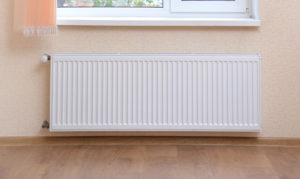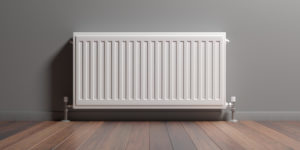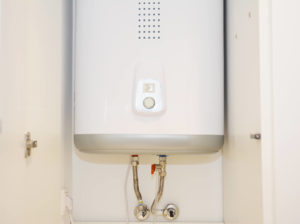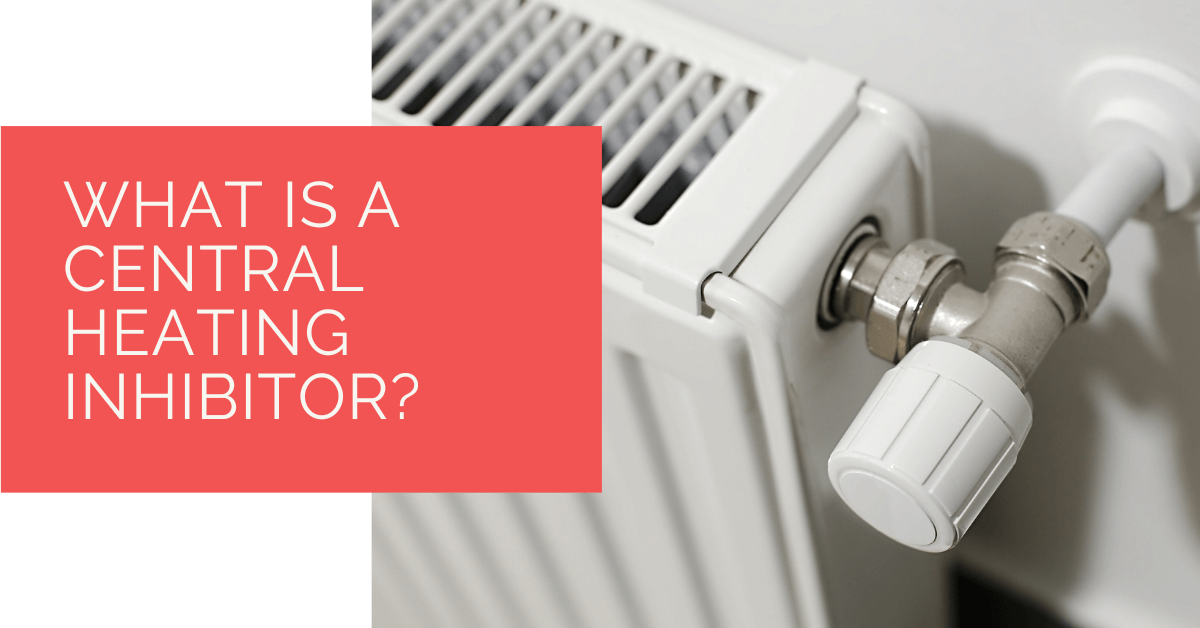If you’re researching central heating systems, you’ll want to learn about inhibitors. Central heating ensures that your house is nice and warm if functioning properly. But how do you keep it running?
Many homeowners don’t know this, but central heating inhibitors are key. What is a central heating inhibitor, and how is it crucial to heating? We’ll answer all your questions in this article!
Contents
- 1 Key Takeaways
- 2 What Is an Inhibitor?
- 3 What Is an Inhibitor Composed Of?
- 4 What Does an Inhibitor Do?
- 5 How Does an Inhibitor Do It?
- 6 How Do You Use an Inhibitor?
- 7 How Often Should You Change the Central Heating Inhibitor?
- 8 Tips and Tricks for Maintaining Heating Systems
- 9 Heat Pump Source: Reliable Heating and Cooling Solutions
- 10 Final Words
Key Takeaways
- A central heating inhibitor is a chemical solution that slows down corrosion in central heating systems, preventing rust and maintaining efficiency.
- It contains various proprietary components like sodium nitrate and disodium molybdate, and its composition is often undisclosed by manufacturers.
- Regularly maintaining inhibitor levels and following best practices, such as not mixing different brands of inhibitors and considering routine maintenance and power flushing, can help extend the lifespan of your central heating system and save on repair costs.
What Is an Inhibitor?
Simply put, inhibitors are retarding catalysts that slow down or stop a chemical reaction. A central heating inhibitor is a clear and pale yellow liquid and chemical solution. It’s added to your central heating system in small quantities to slow down the corrosion process.
In this sense, it keeps rust at bay and thus prevents any reduction in efficiency or performance, extending the system’s lifespan.
In other words, the corrosion inhibitor prevents premature acid or oxidation damage to metal, so it’s necessary for industrial chemical processes. Since these inhibitors don’t stop corrosion entirely, they’re classified as reversible inhibitors.
If you’re still doubtful of the role an inhibitor plays, look at the manufacturer’s manual. Your warranty may be void if you don’t keep inhibitor levels good.
What Is an Inhibitor Composed Of?
Here are the components of central heating inhibitors without going into the boring details:
- Sodium nitrate
- Disodium molybdate
- Potassium tetraborate tetrahydrate
- 2,2′,2”-Nitrilotriethanol
Still, you should know that inhibitors aren’t fully understood by scientists because they’re proprietary, and manufacturers may not disclose their composition. They usually develop them through trial and error.

What Does an Inhibitor Do?
What matters to us is the functions that inhibitors serve when they’re added to a central heating system. As mentioned, central heating inhibitors slow down internal corrosion. If inhibitor levels are low or non-existent, the metal components will react with water, causing rust.
Then, the rust gradually eats away at your metal until tiny parts break off the components. They end up at the bottom of the radiators. This buildup of rust, limescale, and dirt leaves a thick sludge that travels through your heating system and resides at the bottom of radiators and pipes. Later on, it makes it difficult for warm water to flow through pipes.
Accordingly, your radiators will be hot at the top and cold at the bottom. Also, the boiler and pump will need more energy to radiate heat, which means a higher heating bill and a shorter lifespan.
You might find blockages, cold spots, faults, burst pipes, and pricey breakdowns, especially during the mid-winter. The entire system will be less efficient, taking more time to warm the house up. Even more, you might notice pressure changes. After all, buildup causes damage, which results in leaks and blockages, interfering with the water pressure.
Aside from resisting internal rust and the resulting sludge, inhibitors also break down debris, dirt, and minerals so that you can easily extract them.
With these benefits, inhibitors can preserve your central heating system for eight to ten years. You’ll be saving money on pricey replacement boiler parts and constant repairs. Also, you won’t have to replace the system for about a decade. What an investment!

How Does an Inhibitor Do It?
Since we’re talking about internal production, rust pertains to the coating performance of the system and is carried to your radiator or tank. On the outside, if you could see it, you’ll notice that it usually holds itself as a thin film on the metallic surface.
On the inside, the first thing inhibitors do is increase the anodic or cathodic polarization behaviour. Secondly, they slow down the diffusion. Thirdly, they might strengthen the electrical resistance of the metal.
How Do You Use an Inhibitor?
Corrosion inhibitors are typically applied to the metal surface. You add the inhibitor to one of your system’s radiators. It’s a simple process that differs according to your central heating system type: a combi boiler or an open-vented system. To start with, you’ll need to prepare the following tools:
- Inhibitor
- Adjustable spanner
- Flathead screwdriver
- Jubilee clip
- Hosepipe long enough to connect your radiator to an outside drain
- Radiator key
- Flexible tube if your inhibitor bottle doesn’t come with a dosing adaptor
- Towels
Combi Boiler
To apply the inhibitor to a combi boiler, you should:
- Turn your heating system off to let the radiators cool down.
- Attach the hosepipe to the drain valve of one radiator.
- Tighten the jubilee clip.
- Put a towel underneath to prevent any leakage from making a mess.
- Open the drain valve, and let the heating system be drained of water (at least as much as the inhibitor solution).
- Shut off the drain valve (found at the lowest point of the pipes attached to the radiator or an outside wall).
- Unscrew the radiator bleed plug via the adjustable spanner.
- Connect the radiator bleed plug to a dosing adaptor or a flexible tube and funnel if your inhibitor doesn’t come with an adapter.
- Pour the inhibitor into your heating system via the dosing adaptor or tube. We recommend using a one-litre bottle for up to ten radiators. If you have more, add some extra solution depending on the number of extra radiators. Using more than needed won’t damage your system, but you should follow the instructions.
- Remove the funnel or adaptor.
- Use the adjustable spanner to re-tighten the bleed plug, but don’t overdo it, as that can damage the ‘O’ ring.
- Turn on the radiator valves.
- Look at your boiler pressure, and increase it if you need to.
- Bleed your radiators to increase efficiency.

Open-Vented System
If you have an open-vented system or a huge water tank and small expansion tank, here’s what you should do:
- Shut off the water at the mains, or turn off the tank’s value if you have one.
- Check the tank’s condition to ensure it’s clean with no rust.
- If it is, pour the needed amount of inhibitor into the tank (which you can do by making the required calculations) and follow the product’s instructions.
- If not, clean the tank to remove any rust or limescale before adding the inhibitor.
- Turn on the mains water or tank valve.
How Often Should You Change the Central Heating Inhibitor?
As a rule, make it a habit to change your central heating inhibitor annually because that’s usually how long its active chemicals will hold before breaking down. Afterwards, it won’t be effective in slowing down corrosion and rust. Also, if you drain your central heating system, the inhibitor will be removed with the water. So, you’ll need to reapply the solution.
However, you should know that inhibitors may last more or less than a year. After all, many factors play into this (like the system size). So, it’s best to test the inhibitor levels in your system regularly. We recommend doing so if your radiators are taking longer to heat up. You can buy a test kit online to test a water sample from your radiator and add more of the inhibitor as needed.

Tips and Tricks for Maintaining Heating Systems
Since you’re researching inhibitors, we know you’re interested in preserving your central heating system. The following tips can go a long way.
Don’t Mix Inhibitors
Don’t mix chemical inhibitor brands in your radiator, as you might unknowingly cause an unwanted chemical reaction by combining additional or unnecessary chemicals. Instead, you want to buy bottles of the same brand. If that isn’t possible, drain your central heating system before using a different brand.
Invest in Routine Maintenance
We urge you to have a professional heating engineer inspect your heating system every once in a while. If there are complications caused by low inhibitor levels, they’ll add the solution as needed.
Install a Magnetic Boiler Filter
Although inhibitors will break down the thick sludge, they won’t remove it. But a quality magnetic boiler filter will. Install it so that it can catch all the dirt and corrosion particles. Then, the heating engineer you hire will empty your filters as part of their routine services.
Consider a Power Flush
If you’ve gone years without using an inhibitor, your central heating system is probably exhausted due to the accumulating sludge. Unfortunately, applying an inhibitor may not be enough to undo the damage, so you’ll need a power flush.
This cleansing process strips your boiler of any dirt, rust, debris, or sludge that has been accumulating. It involves the circulation of a chemical through your boiler, radiators, and pipes at high pressure to flush out the buildup. A power flush essentially gives you a clean slate that enables the inhibitor to work efficiently and break down any future debris or corrosion particles.
Replace Your Old Boiler
If you’re stuck with an old boiler, you should consider ditching it for an A-rated, non-condensing new boiler. This way, you’ll save energy and money on heating costs and recurring repairs.
Get a Limescale Reducer
We’ve talked about how limescale can contribute to the sludge in your central heating system, especially if you live in a hard water area. So, why not buy a limescale reducer? Unlike filters, it removes limescale, saving you money on upkeep.
Heat Pump Source: Reliable Heating and Cooling Solutions
At Heat Pump Source, we take pride in our unwavering commitment to serving the UK with top-tier HVAC solutions. From the efficiency of heat pumps and the cool relief of air conditioning to the warmth of boilers, radiators, and underfloor heating, our dedicated team is always at the forefront of innovation. We understand the unique needs of every household and business, and we strive to provide dependable health and cooling products and services that are tailored just for you. Ensuring your comfort and satisfaction is our utmost priority. Whether you have questions, need guidance, or require support, we’re always here to assist. Please don’t hesitate to contact us; we’re eager to be of service.
Final Words
Overall, we’ve given you a detailed answer to your question, “what is a central heating inhibitor?” As a retarding catalyst, this solution slows down or prevents corrosion by breaking down rust, limescale, and debris particles. So, the buildup doesn’t create a sludge that remains at the bottom of your radiators and pipes, undermining their performance and ability to heat up.
This way, you can easily remove the buildup and help your central heating system work efficiently. So, maintain your inhibitor levels to save yourself pricey repairs and replacement parts and to keep your heating system running for eight to ten years!
About the Author
At Heat Pump Source, our articles are the product of a collaborative effort among a team of highly skilled HVAC experts. Our dedicated professionals, hailing from diverse backgrounds in heating, ventilation, air conditioning, and refrigeration, contribute their extensive knowledge and experience to every piece of content. This multidisciplinary approach ensures comprehensive coverage. Our commitment is to deliver authoritative, reliable, and tailored advice to meet the unique needs of every household and business across the UK.

